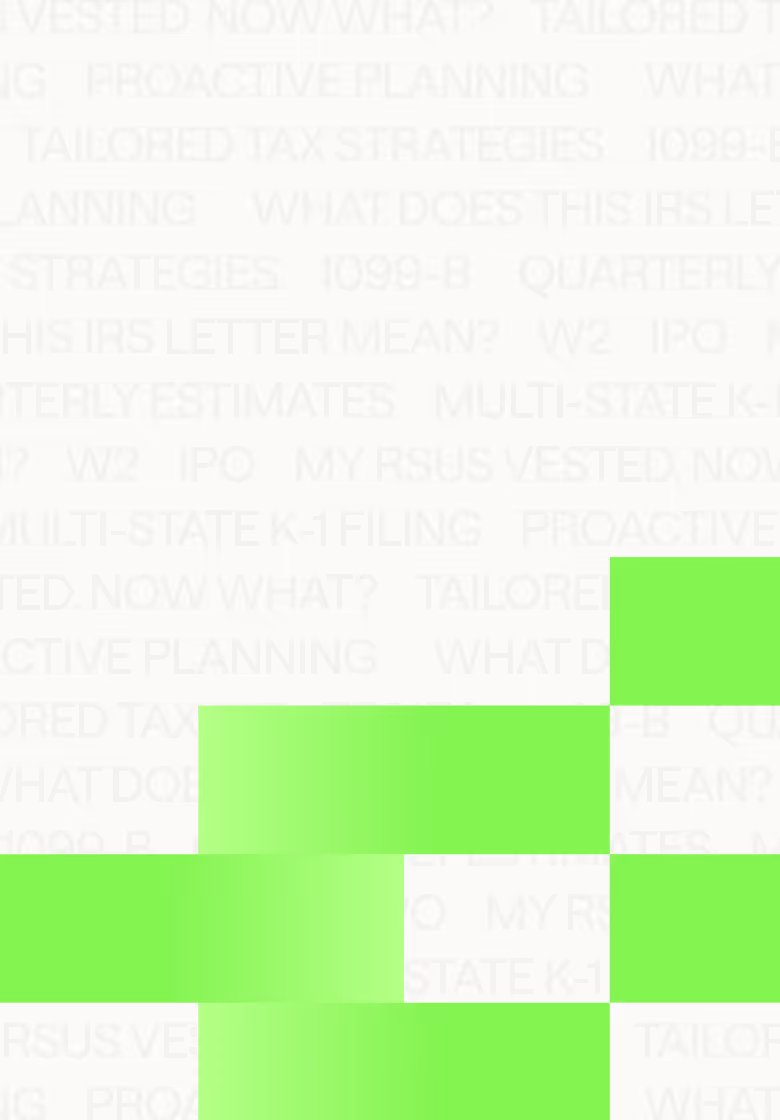How it Works
Pricing
FAQ
Resource Center
Partners


In this guide, we’ll break it down in plain English:
✅ What QSBS is
✅ Who qualifies (it’s not just for founders)
✅ The steps to protect it
Let’s start at the top:
QSBS is a federal tax rule that lets you avoid paying taxes when you sell stock in a qualifying startup.
Here’s how it works:
If your shares meet a few specific rules, you can exclude up to $10 million (or more) of capital gains from federal taxes. That could mean saving hundreds of thousands of dollars — or more — depending on your exit.
It’s designed to reward people who take risks on early-stage startups. But it only applies if a few important boxes are checked.
The most common mistake we see is people checking whether they qualify first.
But it doesn’t matter how long you’ve held your shares, or what type of equity you have — if the company doesn’t qualify, the tax break doesn’t apply.
Think of it like this:
✅ Company must qualify
➡️ Then you can check if you qualify
So, let’s start there.
To be eligible for QSBS, the company that gave you stock must meet certain criteria at the time your shares were issued. These include, but are not limited to:
📌 Important:
There are additional technical requirements that aren't listed here, and eligibility may evolve as the company grows or changes.
Also: This isn’t something you should figure out yourself. It’s the company’s responsibility to determine if it qualifies — and to track that over time. If you think your shares might qualify, you can (and should) ask the company for written confirmation.
Once you’ve confirmed the company qualifies, you’ll need to meet a few personal criteria to take advantage of the QSBS tax break.
You may qualify if:
✅ You acquired the shares directly from the company, while it was still QSBS-eligible
✅ You held the shares for at least 5 years
✅ You’re an individual, trust, or pass-through entity (not a corporation)
Let’s break down what “acquired” means depending on the type of equity:
📌 Why this matters:
If you miss the 83(b) election deadline (30 days), you could delay your QSBS timeline by months or even years — and risk missing the 5-year holding period entirely if you sell too early.
A lot of people assume this only applies to founders. That’s not true.
QSBS can apply to:
If the company meets the criteria and you meet yours, you don’t have to be a founder to benefit.
You can exclude the greater of:
💡 Example:
You exercise options and pay $100,000. Five years later, you sell for $1.5 million.
→ You can exclude up to $1 million in gains (10x $100K).
→ If you invested $1M and sold for $12M, you may exclude up to $10M.
QSBS is a federal tax benefit. But your state might not follow it.
Here’s how a few states treat QSBS:
Before you sell, check with a tax advisor to see how your state handles QSBS.
QSBS eligibility only applies to stock acquired while the company qualified. So what happens if the company later grows or pivots?
Here’s the good news:
✅ Once you acquire eligible shares, that status is locked in.
Even if the company later grows past $50 million in assets or changes its business model, your previously issued QSBS stock is still eligible — as long as it met the requirements at the time you got it.
But here’s what can go wrong:
✅ What to do:
QSBS is one of the most generous tax benefits available to startup employees, founders, and early investors — but it’s often misunderstood or overlooked.
If you think your shares might qualify and you’re planning a future sale or tender offer, it’s worth getting clear on where you stand.
At Fifteenth, we help startup professionals make smarter tax decisions around equity — including how to take advantage of QSBS before it’s too late.
👉 Have questions? Reach out — we’re here to help.
